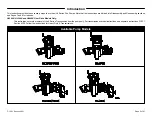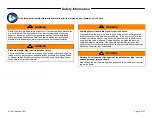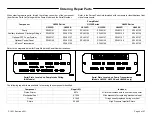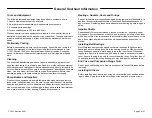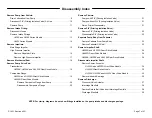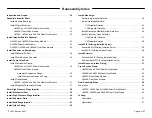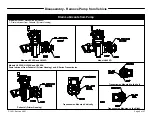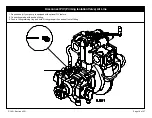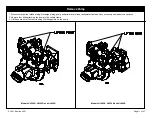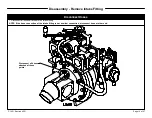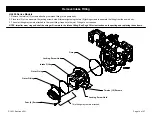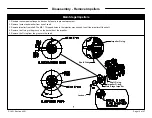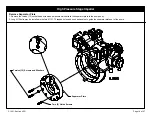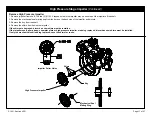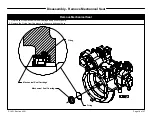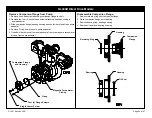
F
−
1031, Section 4321
Page 5 of 57
General Overhaul Information
Tools and Equipment
The following tools and equipment may be needed to overhaul a pump:
1. Usual automotive mechanic's hand tools.
2. An arbor press for assembling or disassembling components.
3. A suitable hoist and slings.
4. Torque capability up to 325 lb-ft (440 N•m)
While no special tools and equipment are required, a few special items are
illustrated or described so the mechanic can make them. These special items
are not absolutely necessary, but they will make the mechanic's work much
easier.
Preliminary Testing
Before disassembling a pump, test it thoroughly, if possible, and record the
results. A comparison of this test with periodic tests recommended in form
F-1031, Section 1000 can often reveal specific pump troubles. Excessive
speed, for instance, indicates that impellers and/or wear rings are probably
worn.
Cleaning
The continued satisfactory operation of a pump depends to a great extent
upon the cleanliness of its internal parts. Sand, dirt or other abrasive material
will wear gears and related parts. Before disassembling a pump for repairs, be
sure to clean its exterior. Make sure the working space, benches and tools are
clean. Use only clean, lint-free cloths to wipe off components. Before reas
sembling a pump or its components, be sure to clean them thoroughly.
Pump Bodies and Impellers
Flush out these components and related parts with clean water and remove
loose scale, caked sediment, etc. Be sure to remove all traces of old gaskets.
Examine pump bodies, covers, adapters and fittings for cracks, severe corro
sion or other damage. Almost all damage to these parts results from improper
use or maintenance, or from freezing. Replace defective parts.
Bearings, Gaskets, Seals and O-rings
Parts of this nature are frequently damaged during removal or disassembly. In
addition, they sometimes deteriorate or lose their effectiveness because of
age or misuse. Replacing these parts whenever overhauling a pump is a good
policy.
Impeller Shafts
Examine shaft for severe scratches, grooves or corrosion - especially under
O-ring seals. If scratches are not severe, and are not under seals, clean them
with a fine-cut file. Grooves are usually permissible if they are not sharp or too
deep. Even slight longitudinal scratches will cause leaks and should be re
moved.
Installing Ball Bearings
Most Waterous pumps are designed so that ball bearings fit tightly on their
shafts and have relatively loose fits in the bearing housings. When mounting
these bearings on shafts, always apply force to the inner races. When bear
ings have a tight fit in the housings, and a heavy force is necessary to install
them, be sure to apply force only to the outer bearing races. For either type of
fit, applying force to the wrong bearing race may damage the balls and race.
End Yoke and Companion Flange Nuts
Do not reuse self-locking nuts. Apply lubrication oil to the shaft threads before
removing.
Installing Oil Seals
Before installing an oil seal in a housing, be sure that the seal, shaft and hous
ing are clean. Apply force to the outer edge of the seal and press in evenly.
Содержание HL Series
Страница 52: ...F 1031 Section 4321 Page 52 of 57 Reassembly Cross Section Views HL200D and HL300D Direct Drive Models...
Страница 53: ...F 1031 Section 4321 Page 53 of 57 HL200K and HL300K Gear Drive Models...
Страница 54: ...F 1031 Section 4321 Page 54 of 57 HL400D Direct Drive Model...
Страница 55: ...F 1031 Section 4321 Page 55 of 57 HL400K Gear Drive Model...


